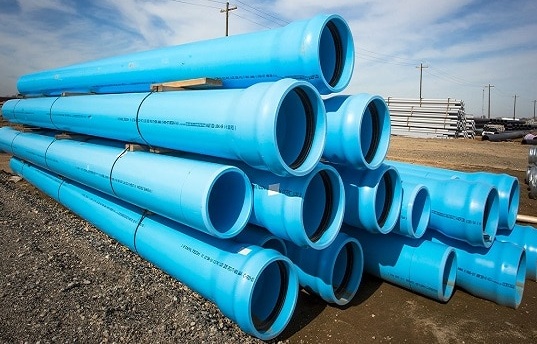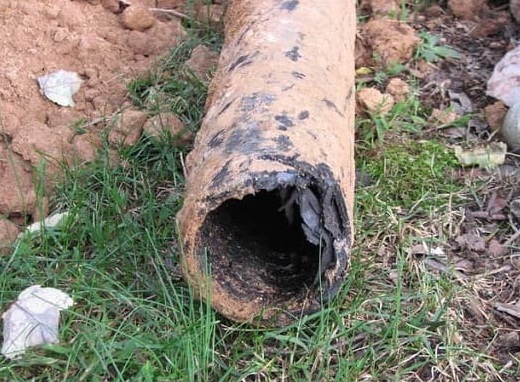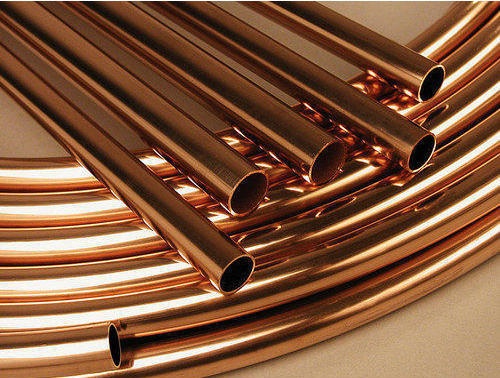- Concrete Pipes
- Cast Iron Sewer Pipe
- Clay Sewer Pipes
- PVC and ABS Sewer Pipe
- Orangeburg Sewer Pipe
- Galvanized Pipes
- Copper Pipes
These are the most common types of sewer pipes.
Let’s discuss the types of sewer pipes in detail.
Table of Contents
1. Concrete Pipes
Concrete pipes are another type of sewer pipe. Although relatively durable, it is susceptible to cracking and aging. But most can be cheap. The advantages of concrete pipes are durability, cost, and flexibility, while the disadvantages of concrete pipes are that they have a limited service life.

2. Cast Iron Sewer Pipes
This type of sewer pipe is usually used in old houses. Cast iron sewer pipes are very durable compared to other sewer pipes. A cast-iron pipe with linear feet and a diameter of 4 inches is said to be able to withstand two tons of pressure compared to other pipes.
ABS, PVC, and clay pipes can also break. Although it has tremendous strength, it also has the disadvantage of not being easy to use because it is heavy and difficult to cut the pipe as needed.

3. Clay Sewer Pipes
Clay sewer pipes are the most common type of sewer pipes. They are made from a mixture of clay and shale and can transport most waste.
They are also inert, so they do not catch fire. However, although clay pipes are resistant to rust, they are not as strong as reinforced concrete pipes. These pipes are fragile under extreme pressure, but they are the cheapest option.
They are now used very rarely and are difficult to find on the market due to more advanced and efficient pipe materials.

4. PVC and ABS Sewer Pipe
PVC and ABS pipes are the maximum famous forms of sewer pipes utilized in homes. These pipes are lightweight, flexible, and maybe without problems reduce as consistent with the requirements.
It is available in white and gray colors, usually eight ft long, and its diameter degrees from half to four inches. It’s easy indoors and outdoors to make it proof against tree roots and different dangerous materials. Additionally, PVC pipes are less expensive and smooth to use.
They may be tied into current clay pipe systems. While they’re now no longer appropriate for high-strain environments, they’re superb picks for homes.

5. Orangeburg Sewer Pipe
Orangeburg pipe is a bitumen pipe composed of layers of wood pulp fibers pressed and glued with a waterproof adhesive impregnated with liquid coal tar pitch.
It was widely used from the 1860s to the 1970s, after which it was replaced by PVC pipes for water supply and ABS pipes for drainage and waste disposal (DWV).
The Orangeburg sewer pipe, also known as fiber optic pipe, is currently obsolete. Instead, they are used in the folded state for construction. The main advantage of this sewer pipe is that it is a waterproof pipe.
In plumbing systems, plumbers prefer this type of pipe because of its lightweight and ease of transport. This pipe can also be cut to any size with a standard wood saw.

6. Galvanized Pipes
Galvanized pipes are designed to last longer and are widely used in home sewage systems. Galvanized pipes are immersed in hot-dip zinc to increase their strength. In fact, they are designed to prevent rust.
The complex method of making galvanized pipes is slightly more expensive than other downpipes, so it can be used almost anywhere in the home.

7. Copper Pipes
This type of sewer pipe is considered more expensive compared to other pipes. However, they are considered high strength and have the highest resistance to heat.
Copper pipes can be used where there is a potential for expansion of pipe walls, even when sewer pipes are filled with concrete.

